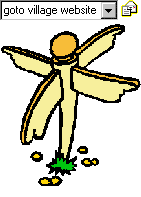
|
Where the Timber GoesSeveral of the key sawmills that take the timber are in East Anglia, but there is also a major customer in South Yorkshire. The business there used to be in supplying timber for mining, but structural timber and fencing have now taken over. Although much of the forest's timber goes for fencing, some of it is capable of higher grade uses such as roof trusses, adds Mr Malone. Every part of the tree is used, and trees of all sizes have a market. The smallest diameter trees can be used for round fencing, or may go to the chipboard factory. Paper isn't made from the forest's trees however, adds Mr Malone. The transportation distances are too great, and spruce is preferred for paper because of its longer fibres. Some of the waste from the timber felling is also used as fuel in the innovative biomass power station a few miles from Santon Downham. Branches, needles and twigs are chipped by a local firm, and sold for mixing in with other fuels such as the litter from chicken farms.
Harnessing technologyThetford Forest has been captured on a geographical information system, explains planning forester Richard Brooke, who is based in the district office in Santon Downham.
Staff can click on a part of the forest and call up all the relevant information. "It needs to be kept up to date, so that we can tell where timber has been felled for instance," says Mr Brooke. It has been a time consuming and painstaking process creating and verifying the system and involved bringing together many sources of information. The maps can be viewed at any scale, and the level of detail can be varied, so that people can chose to view where power lines are, or fire breaks or blocks due for harvesting next year and so on. The system also plays an important part in the records needed for the accreditation under the UK Woodland Assurance Scheme - Forest Enterprise has to be able to demonstrate that the timber supply is sustainable. ©2000 Lisa Russell |
|
A Forest Heath District Council (Suffolk) Project supported by the Heritage Lottery Fund as part of the Millennium Festival ©2000 Designed by ArtAtac |